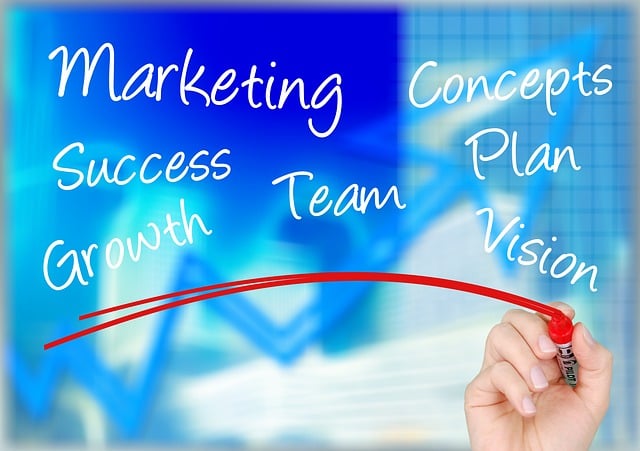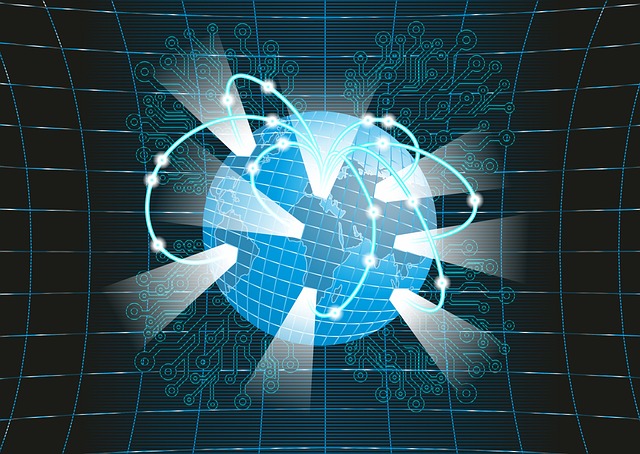In today's digital era, Artificial Intelligence (AI) is a powerful tool for businesses, especially in sales forecasting through AI kitchen automation for chefs. AI analyzes historical data to predict sales trends, aiding decision-making and inventory management. It automates mundane tasks, allowing chefs to focus on quality while gaining insights into customer preferences and market trends. By leveraging real-time data analysis, businesses can optimize menu adjustments and enhance the dining experience. Implementing AI-driven sales forecasting solutions, tailored through a step-by-step guide, ensures precise predictions, resource optimization, and revenue growth in operations like AI kitchen automation for chefs.
In today’s fast-paced business landscape, precise sales forecasting is paramount. Artificial intelligence (AI) has emerged as a transformative force, revolutionizing various sectors, including sales prediction. This article delves into the world of AI business sales forecasting solutions, exploring how AI kitchen automation specifically benefits chefs and enhances sales predictions. We provide a comprehensive guide on implementing AI-driven sales forecasting, offering insights for professionals seeking to leverage this cutting-edge technology.
- Understanding AI's Role in Business Sales Forecasting
- Benefits of AI Kitchen Automation for Chefs and Sales Predictions
- Implementing AI-Driven Sales Forecasting Solutions: A Step-by-Step Guide
Understanding AI's Role in Business Sales Forecasting

In today’s digital era, businesses are increasingly turning to Artificial Intelligence (AI) to gain a competitive edge. One area where AI is making significant waves is sales forecasting, particularly within the realm of kitchen automation for chefs. By leveraging machine learning algorithms and vast datasets, AI solutions can analyze historical sales data, identify patterns, and predict future trends with remarkable accuracy. This enables businesses to make informed decisions, optimize inventory management, and enhance overall operational efficiency.
AI’s role in business sales forecasting goes beyond mere prediction; it empowers companies to transform their approach to sales. In the context of kitchen automation for chefs, AI can automate repetitive tasks, such as analyzing customer preferences and adjusting recipes accordingly. This not only saves time but also ensures consistency in product quality. Moreover, AI-driven insights can help businesses identify emerging market trends, allowing them to stay ahead of the competition and adapt their sales strategies promptly.
Benefits of AI Kitchen Automation for Chefs and Sales Predictions

AI kitchen automation for chefs is transforming the culinary landscape, offering a multitude of benefits that extend far beyond efficient meal preparation. By leveraging machine learning algorithms, AI systems can analyze vast amounts of historical data to make precise sales predictions for restaurants and catering services. This capability is particularly valuable in forecasting demand for perishable goods, optimizing inventory management, and reducing food waste—all crucial aspects of successful culinary businesses.
For chefs, these automated systems provide a chance to focus on creativity and menu development while ensuring operational efficiency. AI-driven insights into customer preferences and market trends enable them to make informed decisions about ingredient sourcing and menu planning. Moreover, real-time data analysis allows for dynamic adjustments to meet ever-changing consumer demands, ultimately enhancing the overall dining experience.
Implementing AI-Driven Sales Forecasting Solutions: A Step-by-Step Guide

Implementing AI-driven sales forecasting solutions can transform your business by providing accurate, data-backed predictions that optimize resource allocation and drive revenue growth. Here’s a step-by-step guide to help you navigate this process effectively.
1. Assess Your Current Sales Forecasting Processes: Begin by evaluating your existing methods. Identify pain points like manual data collection, reliance on historical trends, or inconsistent accuracy. Understanding these challenges will guide your adoption of AI solutions tailored to address them.
2. Identify Key Data Sources: AI models thrive on quality data. Pinpoint the datasets that are most relevant for forecasting—such as sales history, customer interactions, market trends, and competitive intelligence. Integrating diverse data sources from CRM systems, marketing platforms, and other business tools ensures a comprehensive view of your sales landscape.
3. Choose the Right AI Model: Depending on your industry, sales patterns, and available data, select an appropriate AI algorithm. Common choices include time-series analysis, regression models, or more advanced deep learning architectures. For instance, AI kitchen automation for chefs could leverage neural networks to predict demand based on ingredient availability, past orders, and seasonal trends.
4. Prepare and Clean Your Data: Ensure your data is clean, consistent, and formatted correctly for feeding into the AI model. Address missing values, outliers, and inconsistencies. This step is crucial for preventing biased or inaccurate forecasts.
5. Train and Test Your Model: Split your dataset into training and testing sets. Train your chosen AI model on the training data and evaluate its performance against the test set. Fine-tune parameters to optimize accuracy and reduce errors.
6. Integrate with Existing Systems: Seamlessly integrate your AI forecasting solution into existing business workflows and tools. Consider APIs, pre-built integrations, or custom development to ensure smooth data flow and automatic updates.
7. Implement and Monitor Performance: Roll out the solution across your organization, providing training where needed. Continuously monitor model performance and update it with new data as sales patterns evolve. Regularly review forecasts against actual results to refine models over time.
AI business sales forecasting solutions, particularly in the context of AI kitchen automation for chefs, offer unprecedented accuracy and efficiency. By leveraging these tools, businesses can make data-driven decisions, optimize resources, and predict market trends with remarkable precision. Implementing AI-driven sales forecasting involves a structured process, from data preparation to model deployment, ultimately enhancing competitive advantage and fostering growth in today’s fast-paced business landscape.
